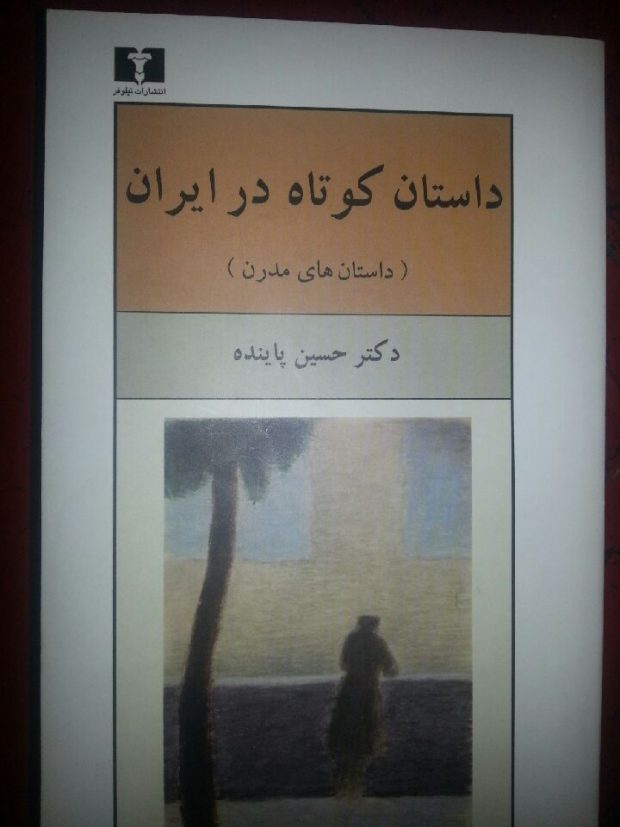The Modern Persian Short Story
By Nasrin Mahoutchi-Hosaini
The modern Persian short story is almost a century old and arrived to Persia via the translation of writers such as Chekhov, Poe, Kafka, and Gogol. When in 20’s and 30’s the Iranian government aimed at modernising the country it allowed university students to travel to foreign countries and, among other skills, to acquire new skills in language and translation. Therefore, as with other fictional forms ofwriting, the Persian short story has been strongly influenced by the techniques and styles of Western Literature and adapted them into its own socio-political cultural demands.
Although the modern Persian short story can be obviously traced back to the One Thousand and One Nights, it is after the 1979 Revolution that its modernity flourished.
Mohammad Jamalzadeh is considered the first writer of modern short stories in Persia. His collection Yak-I Bud Yak-I Nabud; “Once Upon a Time,” which served as a blueprint for upcoming stories can be considered as anecdotal fiction. His writing has been described as being entertaining, with colourful expressions, but also as lacking in depth and universal significance by many critics. In spite of his early success Jamalzadeh had little influence on the coming young generation of formative period.
Instead it was Sadeq Hedayat who deepened the introduction of modernism into Persian literature.
Years of sporadic freedom of speech and freedom of the press, which started in the early 20th century, helped the Persian short story genre adopt a modern style of writing, as translation of modern literature from western culture had a great effect on middle class educated Iranians who couldn’t see the possibility of publishing a full length novel. This was also an era when creative writing workshops flourished and as a result small print runs of anthologies became popular with the educated classes.
The influence of psychological and psychoanalytical theories on narrative techniques gained momentum. As translations of texts by writers such as Freud, Jung and Lacan also appeared in Iran: s Kafka became popular reading amongst intellectual book readers as Hedayat was especially interested in Kafka’s writing.
Hedayat had spent some time in Europe, mainly in France. He read writers such as Rilke, Poe, Kafka, Chekhov and Maupassant. He also spent a few years in India and studied Persian folklore and Middle Persian languages. All this exposure to Western literature, as well as his deep understanding and knowledge of Persian literature influenced his writing. His style of writing grew from the linear and developed a fragmented, branched narrative line. This style is most evident in his famous short story collection Se Gatreh Khoon; “Three Drops of Blood” (1932). His narrative style and subtextual concerns had a long lasting effect on other Iranian writers. One can hear traces of his work in writers such as Bahram Sadegi, Hoshang Golshi, Simin Daneshvar, Mahshid Amirshahi and Golam Hausain Saedii, each an important name of their own in the list of Iranian modern literature.
While well known authors continued their work and wrote their best works in this period, there were also many new writers who arrived at this time and their main focus was the predicament of the ordinary citizens, anti-heroes, pictures of the pain, the suffering of the poor and the oppression of the ruling regime.
The most prominent female writers also arrived in the modernist period. Simin Daneshvar (1921-2012) is the first women of contemporary Persian literature whose reputation rests mainly on her first novel Savusun; “A Persian Requiem” (1969). But her short stories also received attention by new writers and academics because of her focus on the social exclusion of women in Persian society.
With the Revolution of 1978-79 a new climate of literature arrived. With its political and social movements linked to the 8 Years War between Iran and Iraq, established writers continued pursuing their original concerns- the struggle against the injustices of former regime – whilst the new generation found their own perspectives. The modern Persian short story as an established genre made considerable progress at this time.
A few factors can be outlined for this development. One is that the 8 Years War made Iran’s economy very weak and Western imposed sanctions made many products including paper and printing equipments very expensive. As a result there were many established publishing houses that not only were not willing to publish long novels, they were also reluctant to publish at all. Right after the war there were other urgent needs ahead of books. But the new authors from the younger generation gathered in cafes and homes to practice their writing. Anthologies of short stories became popular reading.
The other factor was the rapid growth of the internet in Iran and exposure to genres such as the “Short, short story”, or “flash fiction”; brevity became fashionable among the young writers. Another factor was the introduction of more short story contests; with access to the internet not only Iranian writers could participate in the Iranian short story contests- such as those organised by Sadeq Hedayat’s foundation, they also could submit to international competitions.
So, a movement of new and modern short story writing which started in the early twenty century, found new momentum in the first two decades of twenty first century and is still growing.
